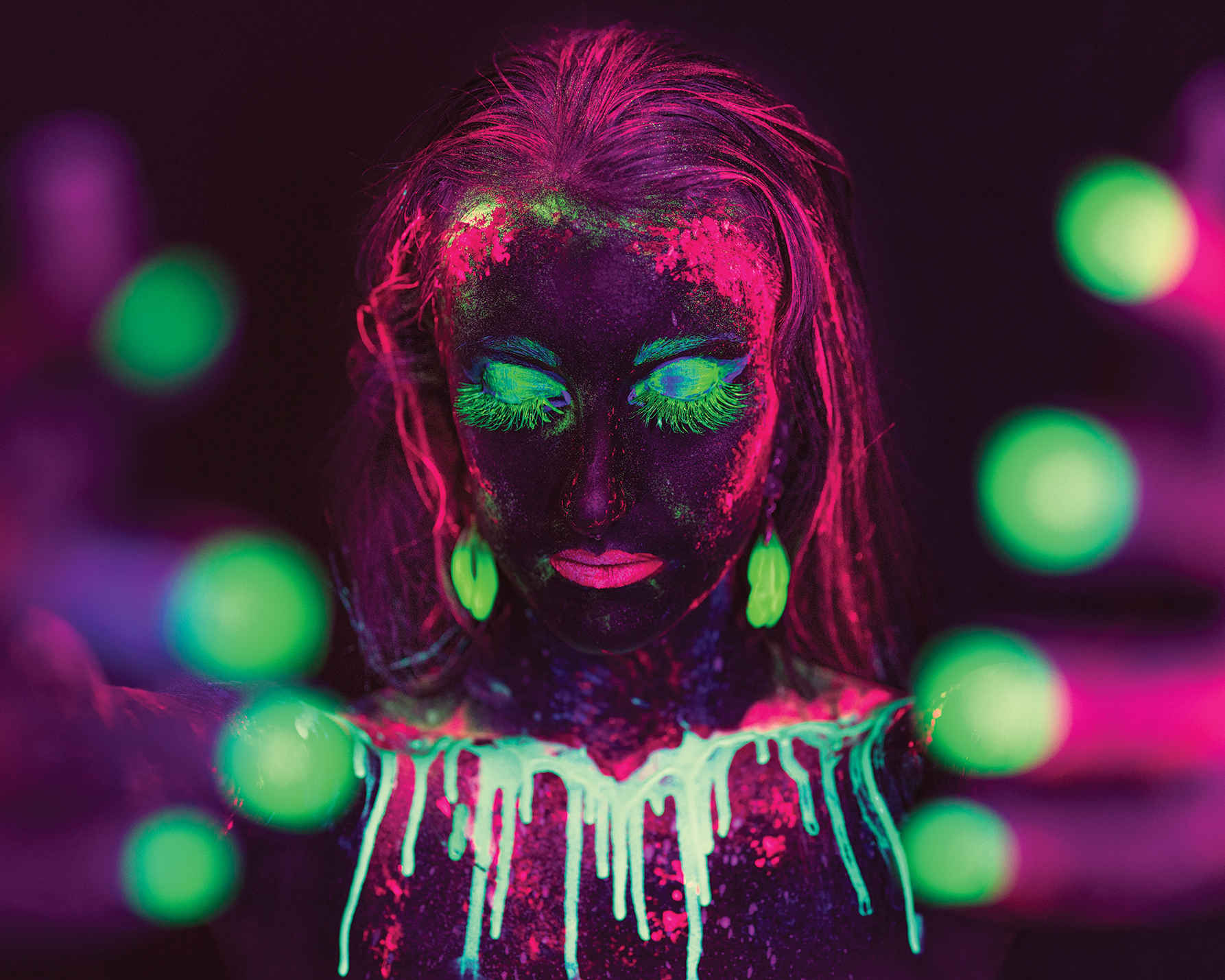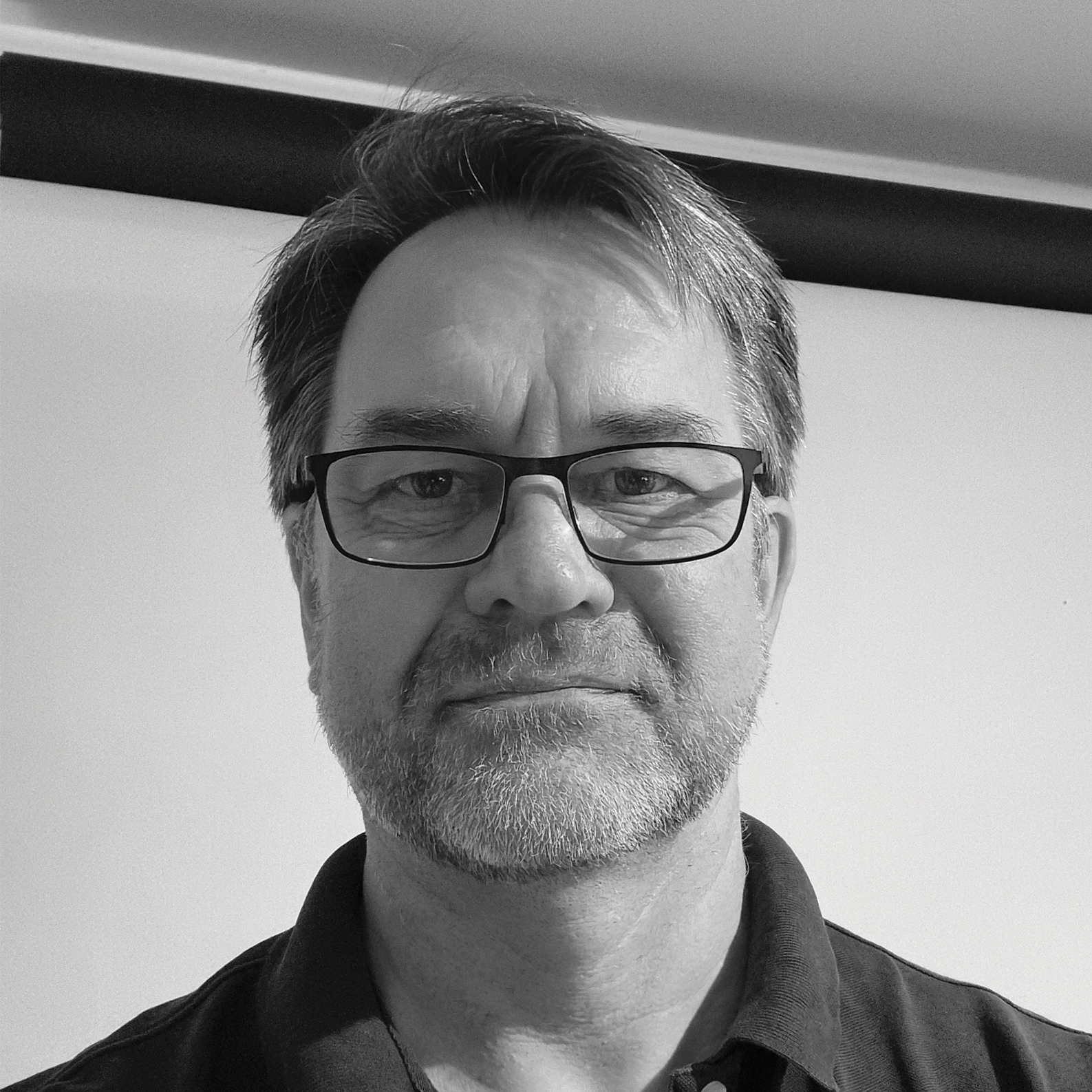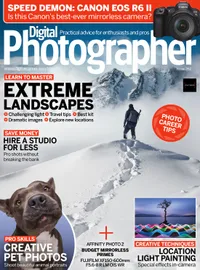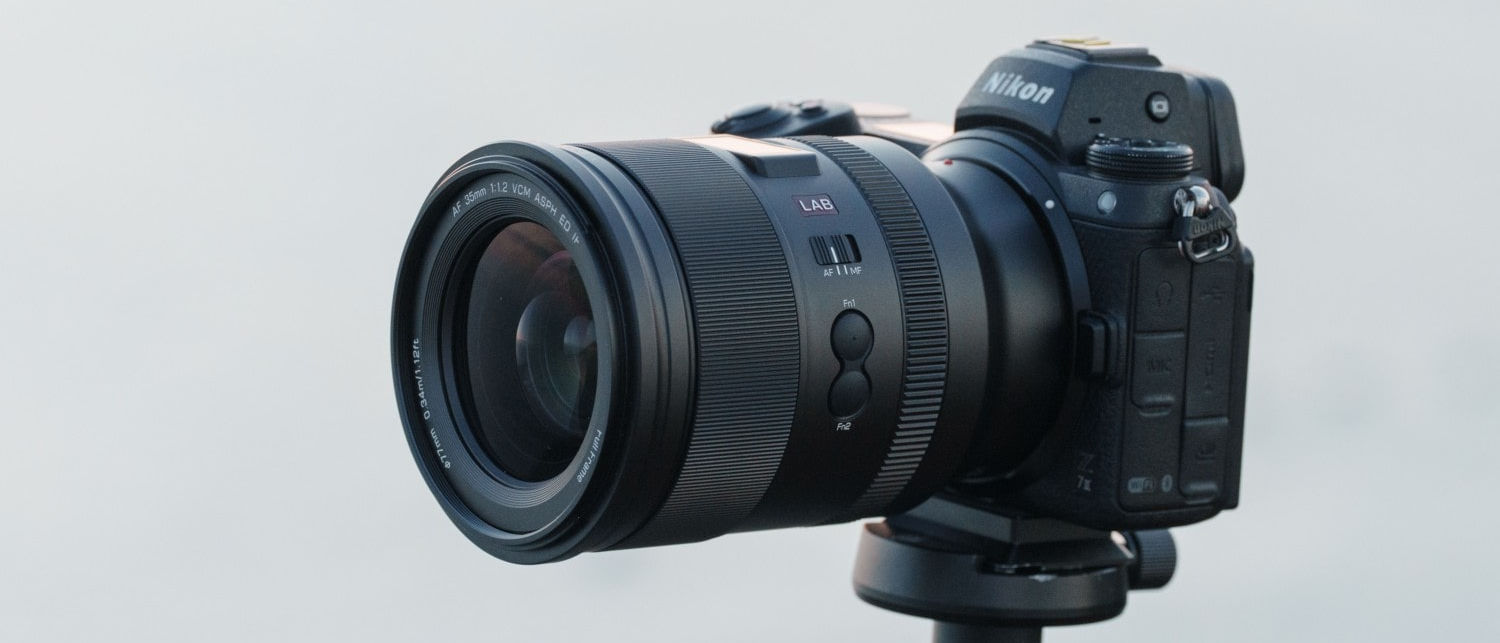"Shooting with the model’s eyes closed is vital"
Photographer Marcus Morgan about his UV light shoot and what needs to be considered to avoid spoiling the effect

This captivating portrait was created with UV Strip lights and careful exposure setting consideration - as the task of balancing ambient light with UV light is not the easiest.
Titled Neon Dream, photographer Marcus Morgan created the image with a Sony A7R III and a Sony FE 50mm F1.2 GM lens (at 1/160sec, f/2, ISO800).
1. Intensive colors
The UV shots captivate with the significant contrast between the dark background and prominent colors. “We minimized the number of colors in the image to keep it coherent, and not lose the face of the model,” Marcus says.
To focus on the UV colors, technical requirements must be taken into account. “The challenge was to balance the ambient light with UV light so the ISO did not get too high and add noise. However, the UV still looks bright enough,” he explains. This creates a harmonious overall picture that does not distract the viewer with interference.
2. Optical illusion
“The blurred nails almost look like light sources at first glance,” Marcus says. This is the first impression, because the defocusing has turned the nails into blurred points of light, a sophisticated effect that has created an optical illusion.
The viewer engages with the photograph and questions the technical procedures used. Marcus creates this feeling by cleverly staging the model’s hands so that they do not cover the face and are integrated at the edges of the image. In post-processing, he brought out the colours of the nails to emphasise contrast and heighten perception.
3. Contrasting textures
The combination of out-of-focus and sharp picture elements draws the viewer’s attention to the central point of the photograph – the model’s face. This is extremely important when the image contains such strong contrasts. Essential elements are emphasised and complementary ones reduced, with the interaction creating a unique mood.
The best camera deals, reviews, product advice, and unmissable photography news, direct to your inbox!
“I love having bokeh in my shots as I like the sense of depth and mystery that it adds to this shot,” says Marcus. To enhance this effect, Marcus boosted the shadows around the face area in post-processing so that it didn’t lose any detail.
4. Strong pose
A model’s pose can make or break the picture, so Marcus focused on clearly communicating his ideas to the model. He was aiming for a calm pose that didn’t appear forced, even though it has been staged. In this way, the pose enriches the image and underlines the atmosphere.
UV light also has its own peculiarities that need to be considered to avoid spoiling the effect. “Shooting with the model’s eyes closed is vital, as UV light makes the whites of the eyes purple and the irises black. This would be distracting,” he explains.

Portrait and fashion photographer Marcus Morgan is based around Bristol, UK. He initially started out concentrating on landscape and architectural photography before shifting his focus to portraiture six years ago.
“I like the variables that working with a model and a makeup artist bring to a shoot. Together, we can make adjustments that suit their personality better.”
This article originally appeared in Digital Photographer, a monthly magazine, and the kitbag essential for pros, enthusiasts, and amateurs alike!
Inside, you'll find practical guides, shooting tips, and techniques from working photographers, plus all the latest industry news.
- "On this shoot, the rain and the strong wind were my biggest enemies”
- Photographer tells story of getting up close and personal with a python
- “I chose the ND filter to avoid overexposure and control the powerful glow"
- Urban street photographer reveals his candid capture secrets
- "I don't use any external flash, this image is shot purely with natural light"
- Photographer tells story of his amazing shot of wallabies fighting
- The 4 photographic decisions that take this motorsport shot to the next level

Kim is a photographer, editor and writer with work published internationally. She holds a Master's degree in Photography and Media and was formerly Technique Editor at Digital Photographer, focusing on the art and science of photography. Blending technical expertise with visual insight, Kim explores photography's time-honored yet ever-evolving role in culture. Through her features, tutorials, and gear reviews, she aims to encourage readers to explore the medium more deeply and embrace its full creative potential.

